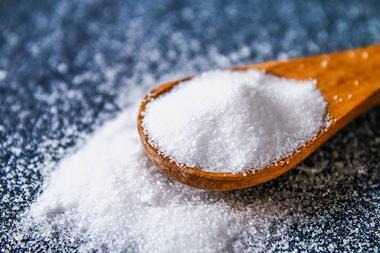While it has taken some time to achieve, health-conscious consumers have increasingly taken to low-sodium products. Here, MicroSalt details the progress made in the last 20 years.
The issue of high sodium intake and its adverse health effects has become a significant concern for health organisations worldwide. Excessive sodium consumption is linked to hypertension, cardiovascular diseases and stroke. Consequently, there has been a growing emphasis on reducing sodium intake, leading to the introduction and promotion of low-sodium products.
Brief history of low-sodium products in the UK market
● Early efforts and initial products
The UK has been at the forefront of public health initiatives aimed at reducing sodium intake. The movement towards low-sodium products gained momentum in the early 2000s, driven by increasing awareness of the health risks associated with high sodium consumption. Early efforts were spearheaded by government agencies, health organisations, and non-governmental organisations (NGOs) advocating for reduced sodium levels in processed foods.
One of the first significant steps was the establishment of the Food Standards Agency (FSA) in 2000, which played a crucial role in promoting healthier food choices. The FSA launched several campaigns to educate the public about the dangers of high sodium intake and encouraged food manufacturers to reformulate their products to lower sodium content.
● Reformulation and industry response
In response to these initiatives, many food manufacturers began to reformulate their products to reduce sodium content. This period saw the introduction of low-sodium versions of popular items such as soups, sauces, snacks and ready meals. The reformulation process was often challenging, as sodium plays a crucial role in flavour, preservation and the texture of food products. Manufacturers had to find innovative ways to maintain product quality while reducing sodium levels. However, within the last few years, products like Microsalt have made reformulation and taste preservation much easier.
The UK government’s introduction of voluntary sodium reduction targets in 2006 marked a significant milestone. These targets provided a framework for the food industry to follow and helped accelerate the reformulation process. Major retailers, such as Tesco and Sainsbury’s, supported these efforts by introducing their own range of low-sodium products and setting targets for sodium reduction in their private-label brands.
● The role of public health campaigns
Public health campaigns have played a pivotal role in raising awareness about the importance of reducing sodium intake. The ‘Salt Awareness Week’, organised by Consensus Action on Salt and Health (CASH) since 2001, is an annual event aimed at educating the public and encouraging food manufacturers to reduce salt levels. These campaigns have contributed to increased consumer awareness and demand for low-sodium products.
Consumer acceptance of low-sodium products
● Early skepticism and challenges
Initially, consumer acceptance of low-sodium products was mixed. Many consumers were skeptical about the taste and quality of these products, associating low sodium with blandness. The challenge for manufacturers was to overcome this perception and develop products that met consumer expectations for taste and quality.

● Gradual acceptance and market growth
Over time, consumer acceptance of low-sodium products began to grow. Several factors contributed to this shift:
- Improved product quality: Advances in food technology and ingredient innovations like MicroSalt have allowed manufacturers to produce low-sodium products that retain their flavour and texture. This has also aided efforts to provide clean-label foods without flavour enhancers.
- Health consciousness: Increasing awareness of the health risks associated with high sodium intake prompted more consumers to seek out healthier food options. The rise of a health-conscious demographic, including millennials and older adults, continues to drive demand for low-sodium products.
- Regulatory support: Government regulations and public health initiatives continued to promote sodium reduction, leading to broader availability and visibility of low-sodium products in supermarkets and restaurants.
- Marketing and labelling: Effective marketing strategies and clear labelling of low-sodium products helped to attract health-conscious consumers. Claims such as ‘reduced salt’, ‘low sodium’ and ‘heart-healthy’ resonated with consumers looking to make healthier food choices. As efforts to reduce sodium migrate across a wider range of food categories, many marketers are simply lowering sodium as a matter of responsible business and focusing on improved nutritional statements rather than creating stand-alone low-sodium items.
Current trends and market analysis

In recent years, the market for low-sodium products in the UK has continued to expand. Several trends are noteworthy:
- Diverse product range: The range of low-sodium products has expanded significantly, encompassing categories such as snacks, ready meals, dairy products and condiments. This diversity allows consumers to incorporate low-sodium options into various aspects of their diet.
- Innovative ingredients: Manufacturers are increasingly using innovative ingredients, such as Microsalt, to enhance the flavour of low-sodium products and to expand their reach across numerous food categories. MicroSalt offers a number of real lower-sodium salt offerings that utilise patented technology to deliver a cutting-edge, low-sodium solution.
- Consumer education: Ongoing efforts to educate consumers about the benefits of low-sodium diets have led to increased acceptance. Health organisations and influencers play a crucial role in disseminating information and encouraging healthier eating habits.
- Retailer initiatives: Major retailers continue to support sodium reduction efforts by setting ambitious targets and introducing new low-sodium products. A broader understanding that Microsalt delivers lower sodium without a sacrifice in flavour has been a cornerstone of retailer activity.
Case studies
Tesco’s low sodium range
Tesco, one of the UK’s largest supermarket chains, has been proactive in promoting low-sodium products, launching a range of items under its private label brand and setting stringent sodium reduction targets. Tesco’s commitment to health and wellness has resonated with consumers, leading to increased sales of its low-sodium range.

Public Health England’s Salt Reduction Programme
Public Health England (PHE) has been instrumental in driving sodium reduction efforts. The PHE Salt Reduction Programme, launched in 2014, set ambitious targets for various food categories. The programme’s success is evident in the significant reduction of sodium levels in processed foods and the increased availability of low-sodium products in the market.
Conclusion
The journey towards consumer acceptance of low-sodium products in the UK has been marked by significant progress and challenges. Early skepticism has given way to growing acceptance, driven by improved product quality, increased health consciousness, regulatory support, and effective marketing strategies. The expansion of low-sodium product ranges and ongoing public health initiatives continue to promote healthier eating habits.
As the market for low-sodium products continues to evolve, and with products like MicroSalt, it is essential for manufacturers, retailers, and health organisations to collaborate and innovate. By maintaining a focus on product quality and consumer education, the momentum towards reduced sodium intake and improved public health can be sustained. The UK’s experience provides valuable insights for other countries seeking to address the global issue of high sodium consumption.
For more on the challenges of sodium consumption and MicroSalt’s solutions see the video below:
For more details on MicroSalt visit the links below:
IG: @microsalt.uk
LinkedIN: https://www.linkedin.com/company/microsalt-uk/


















